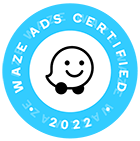
Managing, using and optimizing your company’s data
You may think of your business as a liquid heating fuels retailer or wholesaler, an equipment manufacturer, a transport or storage facility, or something else entirely. When you boil it down, however, every company is a data management operator.
Your customer account information? Data. Heating degree day calculations? Data. Pricing decisions? Data. Dispatch and scheduling? Equipment specs? Warehouse supplies? Sales and service? Data, data, data and data. Data is information, and the life’s blood of your operations and customer service.
In the old days, “data” was kept in ledgers or single- or double-entry account journals or on notes strewn around the office. It was messy, inefficient and led to billing and service errors. Anyone old enough to remember the pre-computer era will have stories of invoices sent to the wrong customer or service techs arriving with replacement parts that didn’t match the equipment. To err may be human, but may also be time-consuming, costly and damaging to your business reputation.
The answer is to digitize that data and manage it with the help of customized software and partners who are fuel industry specialists.
The Tunnel and the Cloud
These days, your client data is most likely stored on your enterprise software provider’s server. Your fuel data – gallons on hand, gallons protected, daily price and hedging alerts – may be stored elsewhere, unless your hedging partner also manages your operations. Degree days may come from yet another provider. Billing, payments and bank balances may be in at least two other locations, if not more (credit card gateways, digital billing presentment and payment software, ECH/EFT providers, your business banking accounts). Your customer service portal and customer service representatives need to be able to access and analyze all this data from all these servers quickly and securely.
How does the data get from one place to another? With information as sensitive as this, your tech teams and the provider will utilize a Virtual Private Network (VPN), which acts as a secure, encrypted “tunnel” through which the data can flow. Data can be requested and received securely by an application programming interface, or API. A digital key (and/or an authenticated user) would be provided by the hosting entity that gives your front-facing customer portal access to that data so that end users can view their account information. This key “knocks on the tunnel gate,” and the API allows the data to flow to your user portal. When choosing a development partner for your website, portals and other interfaces, you should confirm that they have extensive experience integrating APIs with their product and that it will work with your specific needs.
Aside from these operational data transfers, it will often be necessary to send large amounts of data from your servers to another party. This could be a customer database for digital or printed mail campaigns, audio files of the company president speaking with the media, in-progress presentations, office documents, a how-to demonstration video, or images from a customer as part of a remote service call.
Many servers have limits on the size of each email, which makes sharing and collaborating on large files difficult. In these situations, you may need to use a cloud server but have concerns about the security of megascale providers. Your technical partner can offer advice on which cloud providers are best for your needs, and may offer a bespoke solution of its own.
The cloud is actually a global network of servers that operate as a single ecosystem. They can store and manage data and share or stream content, and can be accessed from any internet-capable device. As with all your data, security is important to keep malware at bay.
In broad strokes, when considering a cloud partner, factor in its:
- Compliance with recognized security and operational standards;
- Technology and scope of services matched to your needs;
- Pricing and flexibility – long-term contracts and pay-as-you-go flexibility;
- Downtime history and back-ups;
- Business health and reliability;
- Tech support availability.
And some nitty-gritty stuff: while most cloud servers will offer basic services, you will want to confirm:
- Authorization and restriction capabilities to limit data and document sharing to specific individuals or groups;
- Automatic notifications to all parties when materials are uploaded or modified;
- Ease of use;
- Any limitations on file size, groups or active users.
Data-Driven Success
Your success is based on data. “No,” you say, “it’s based on my people.” Your staff may be the best in the world, as you believe, but even their sales, installations and service metrics can be enhanced with the proper use of your customer data. Here’s how.
Longtime customer Joe Loyal calls because his furnace has broken down again. Before sending a tech out, your service manager takes a look at the account data. Mr. Loyal’s furnace is more than 30 years old, has broken down three times this season, and his fuel drops are larger than usual – large enough to have required you to adjust his automatic delivery schedule to protect against run-outs. After giving the tech this data, just so everyone understands the situation, the service manager also enters the upgrade opportunity into your integrated sales tracking software. You, as company owner or president, and your sales manager get the notification. When the tech enters his service notes after the call, your top salesperson, Sal, can call Mr. Loyal to discuss the many reasons why it might be time to put the furnace out to pasture for good. The rest of the process is data-driven. Sal, as well as you and your sales manager, get regular reminders to follow up with Mr. Loyal. If a follow-up isn’t entered, the reminders continue, and management (that’s you and the sales manager, again) gets alerts that a potential sale is in danger.
For years, Sally Sharp has been getting fuel from a few different will-call-only retailers to save a few cents per gallon. Now she needs a new water heater, and landed on your website. She likes the professional look and your in-depth explanations of your services and experience, and so fills out the online form to schedule a consult. That data gets entered into your sales tracking software and forwarded to Sal and management. As above, your software keeps everything and everyone current. Sal has 24 hours to call Ms. Sharp or reminder alerts will start going out. If he doesn’t get through to her and schedule an appointment, those reminders will continue every day (or every other day, based on your preferences). Once the consultation is in the system, Sal will get a reminder the day before his meeting. Alerts can be scheduled to follow up, submit a quote, and (because Sal is your best salesperson) mark the sale as closed. But the data-managed process doesn’t end there. All the information about Ms. Sharp is transferred to your full account management system and, voila, she is a new customer! Your CSR didn’t have to create an account because the system did it. The information can also be forwarded to your service/installation team, parts department, or any other member of your team.
Jessie Millen is a relatively new customer. She’s 32, a first-time homeowner, and is juggling a full-time remote job and a 2-year-old toddler named Dennis. She chose your firm because your app interface lets her manage her account, request deliveries and pay her bills from her phone. Now, there’s a strange noise coming from her boiler. She logs into her online account and accesses your remote service feature. Her account data autofills the forms, so all she needs to do is explain the problem. She records the noise and uploads it to your cloud server and then schedules a call-back time when she thinks (hopes) Dennis will be napping. All that data gets whooshed to your service manager, the on-call tech, your customer service department … and added to the Millen account history. At the appointed time, your service manager or technician calls her back. Dennis didn’t nap, so Jessie is feeding the tech more information while feeding Dennis his chicken fingers. After determining that the noise was not dangerous, the tech arrives the next afternoon. Jessie received an automated text earlier in the day letting her know when to expect the service call. Since the problem was diagnosed and the equipment model number was already in her customer data, the service van was loaded with the correct replacement parts and the tech was in and out of there quickly … getting Jessie back to work (and Dennis) and the tech off to the next service call.
The average individual doesn’t spend a lot of time visualizing “data” and how it is part of every aspect of their day. That is why it is so important to choose a data management partner who makes it their business to visualize how data can make your business better.
Richard Rutigliano is President of PriMedia, a communications firm that develops integrated software and business applications specifically for home comfort providers. He can be reached at 516-222-2041 or rrutigliano@primediany.com.














